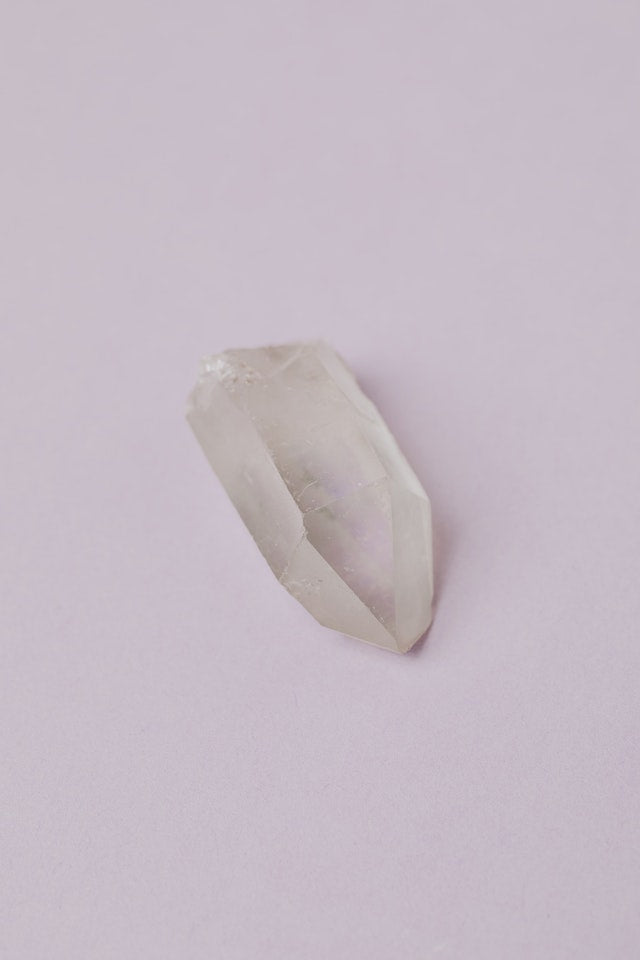Cutting and Cleaving. The cutting and cleaning of valuable stones other than jewel is a
exchange totally particular from jewel cutting. The valuable stone lapidary cuts each specie of
stone aside from jewel. The strategies utilized by various lapidaries change fairly in their subtleties,
furthermore, there are many proprietary advantages which are pretty much desirously watched by their holders,
be that as it may, overall the techniques used to decrease the unpleasant materials to the completed pearls are as
follows: First, the unpleasant material, if of too huge size, or if exceptionally defective, is slitted, or, on the off chance that it
has an articulated cleavage, it could be cut, to lessen the size or to eliminate
blemished parts. Cutting is refined by[214] methods for a roundabout circle of slight metal which is
pounded with the goal that it will be level and turn genuinely, and is then cinched between face plates, much
as an emery wheel is held. The smooth edge of the roundabout circle is then accused of precious stone
residue and oil, the precious stone residue being slept with into the edge of the metal plate by the pressing factor of
some hard, fine-grained material, like chalcedony, or folded into the metal by the utilization of a
pivoting roller. Once charged, and kept unreservedly provided with oil, a cutting wheel will cut a
extensive number of bits of any valuable stone less hard than jewel, and will do as such with
impressive rate. The wheel is, obviously, turned quickly for this reason.
The severing of certain jewel materials, like genuine topaz (what parts impeccably across the
crystal, corresponding to its base) is handily refined, and it is done in much a similar way as the
separating of precious stone. The feldspar pearls, like moonstone, amazonite, and[215] labradorite,
likewise separate easily in specific ways. Spodumene, of which Kunzite is an assortment,
severs too effectively to be in any way sturdy. Most diamond minerals, nonetheless, need such amazing cleavage
furthermore, when it is wanted to eliminate blemished parts, or to lessen enormous pieces to more modest sizes, these
materials are slitted as above depicted.
"Scouring Down." The material being of almost the components of the completed piece, the following
step is to "rub it down," as it is called, to around the shape and size wanted. This scouring
down measure was once done through a delicate metal lap (in some cases of lead), accused of
coarse emery powder and water. Carborundum, being more earnestly and more keen than emery, has
supplanted it generally. A portion of the milder materials, such, for instance, as turquoise, are scoured
down on a quick flying carborundum wheel of comparative sort to those utilized in machine looks for
granulating steel instruments. These wheels turn in an upward plane and are kept[216] wet. The laps
before referenced run on a level plane. The carborundum wheels have the grains of carborundum
established together through some limiting material and this steadily disintegrates, uncovering
new, sharp front lines. Different sizes of grain, and different levels of hardness of the limiting
material, just as different rates, are expected to suit the various materials scoured down
by the lapidary. A few lapidaries rub down the harder and more significant pearls, for example, ruby upon
precious stone charged laps of metal or other metal.
Cabochons. The scouring down measure doesn't leave a facetted surface, however just a coarse
generally adjusted or straightened surface. In the event that the material is to be left in somebody of the level upheld,
adjusted excellent conditions known as cabochon cut, the surfaces need just to be smoothed (through
fine abrasives, for example, fine emery applied through laps, or even by fine emery or
carborundum material), and they are then prepared for polishing.[217]
Facetted Stones. Assuming, be that as it may, the stone is to be facetted in either the splendid structure, to some degree
like the jewel, or step cut or in any case facetted, it is established emphatically onto a holder (much
like the wooden piece of a pen holder). The upper finish of the holder is refreshed in one of a progression of
openings in what is known as a "ginpeg" resting in the work-seat close to a metal lap, and the stone is
squeezed upon the quickly turning surface of the lap, which is accused of jewel dust or
carborundum, as per the hardness of the material to be facetted. A level feature is in this way ground
upon the stone. By pivoting the holder a progression of features, all in a similar set, is created. The
holder is then changed to another situation on the ginpeg and another arrangement of aspects laid upon the
stone. In this way upwards of four or five levels or sets of aspects might be applied aside, say the top
of the stone. The last is then eliminated from the holder and solidified to it once more, this time with
the base uncovered, and a few arrangements of features applied.[218]
The stone is currently cut however not cleaned. The aspects are level, yet have a harsh ground-glass like
surface. The cleaning is generally done by laborers who don't cut stones, however who sit idle yet
clean them. In little shops, be that as it may, a similar lapidary plays out every one of the pieces of the work.
Cleaning. The cleaning of stones, regardless of whether cabochon or facetted, is refined by the utilization of
finely powdered abrasives, for example, corundum powder, tripoli, pumice, clay powder, and so forth
Every pearl material requires extraordinary treatment to acquire the best outcomes. It is here that the majority of the
proprietary innovations apply.
The inconveniences of the lapidary in getting the sharp clean that is such a lot of respected on fine diamonds are
many. When all is said in done, the cleaning powder ought not be very pretty much as hard as the material to be cleaned,
else it might crush as opposed to clean. The material ought to be utilized with water or oil to give it a
rich consistency. It ought to be sponsored by laps of various materials for[219] unique
purposes. Subsequently, when sponsored by a genuinely hard metal even tripoli, albeit a lot gentler, will
clean sapphire. On a lap of wood, tripoli would neglect to finish hard materials, however would finish
amethyst or other quartz jewel. A difference in speed of the lap, as well, changes the impact of the
cleaning material. I have seen a lapidary, who was having no accomplishment at cleaning an emerald,
get generally excellent outcomes by utilizing a stick as a brake and hindering his lap.
The cleaning material should be of uniform size, ideally water coasted or oil drifted, to
give great outcomes. The lap should be kept level and valid and the stone should be appropriately held, or the
levelness of the aspects, whereupon brilliancy depends to some degree, will be annihilated during the
cleaning.
The gentler materials, like opal, require treatment more like that concurred cut glass, and delicate
grating powders, like pumice, get the job done to clean them. Most likely scarcely two lapidaries would
work precisely similar in their[220] treatment of valuable stones, and each gatekeepers his insider facts, yet all
utilize around comparative general strategies. Some have conceived mechanical holders which
license the continued slicing of stones to the very same points, and that, as well, with a precise
information on the points utilized. These points can be certainly changed for various materials,
as indicated by their refractive files. Different lapidaries produce exceptionally fine outcomes by simply hand
strategies.
These subtleties have been gone into to give a thought of the strategies for the lapidary and of the numerous
varieties in strategy. When all is said in done, in any case, the cutting or dividing, the scouring down to shape,
the streamlining, everything being equal, and the facetting and cleaning are done fairly likewise
by all lapidaries.
Having now had a brief look at the techniques for the lapidaries, let us momentarily think about what
comprises great "make" in stones other than jewel.
Great "Make" in Colored Stones. Brilliants,[221] cut from materials having more modest refractive
lists than jewel, (and this gathering incorporates practically all stones other than precious stones) ought to
have more extreme back points and higher tops than the best precious stone brilliants have. A 35-degree top
point (the point between the slant of the top and the plane of the support is known as the top point)
what's more, a 41-degree back point being about ideal for precious stone, other pearl materials ought to have
all the more almost a 39-degree top point and a 44-degree back point to give the best conceivable
brilliancy. Notwithstanding, on account of shaded jewels like ruby, sapphire, and so on, where the worth
depends significantly more to a great extent upon the shading than upon the brilliancy, it is habitually important to
cut the splendid thicker or more slender than these extents to develop or to thin the shading.
All in all, the thicker a stone of a given spread the more profound the shading will be. The tone may likewise
be developed by providing for the stone an adjusted shape, both above and below[222] the support, and
facetting it in strides rather than in the splendid structure. Expanding the quantity of steps likewise serves to
marginally develop the shading, as a bigger number of reflections is along these lines acquired inside the material,
the light in this way needs to travel a more noteworthy distance through the hued mass, and a greater amount of the light, of
shading other than that of the stone, is consumed.
Improving Color by Proper Cutting. Notwithstanding the shading improvement that can be brought
about by changing the state of the cut stone there are various pearl materials whose tone
changes incredibly in various ways, and this reality calls for able use to get the
most ideal outcomes. Accordingly most tourmalines of profound shading should be cut with the top or table, of
the completed stone, on the kaleidoscopic gem instead of at right points to the pivot of the
crystal. Whenever cut the last way they would be excessively thick in shading. Then again, generally blue
sapphires ought to be cut across the crystal hub rather than[223] the way that tourmalines ought to
be cut. To cut a sapphire with its table on the crystal would probably make it have
a greenish cast in view of the admixture of the unpleasing "standard beam" of yellowish color with
the blue of the stone as seen all over the crystal.

